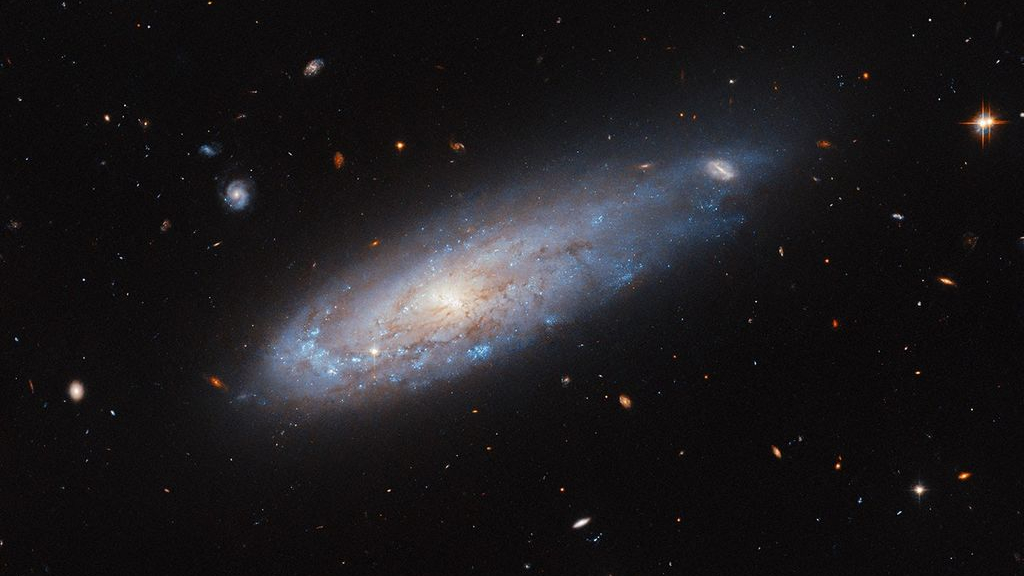
A vibrant spiral galaxy appears to be whizzing through space as if it were launched out of a cosmic cannon.
The galaxy, IC 3225, is located about 100 million light-years from Earth and is a member of a large group of galaxies known as the Virgo Cluster. A new image from the Hubble Space Telescope captures IC 3225 with a comet-like tail of gas streaming from the galaxy's central disk as it travels speedily past its galactic neighbors.
"The scenes that galaxies appear in from Earth’s point of view are fascinating; many seem to hang calmly in the emptiness of space as if hung from a string, while others star in much more dynamic situations!" NASA officials said in a statement releasing the new image. “Appearances can be deceiving with objects so far from Earth.”
IC 3225 is just one of over 1,300 members of the Virgo Cluster — some of which are also visible in the new image. As IC 3225 moves through space, it experiences resistance from gas and dust in the intracluster medium, causing what is known as ram pressure.
Related: The best Hubble Space Telescope images of all time!
"The density of galaxies in the Virgo cluster creates a rich field of hot gas between them, called intracluster medium, while the cluster's extreme mass has its galaxies careening around its center in some very fast orbits," NASA officials said in the statement. "Ramming through the thick intracluster medium, especially close to the cluster’s center, places enormous ram pressure on the moving galaxies that strips gas out of them as they go."
As gas is stripped from the galaxy, its pressure dynamics shift and either halt or boost star formation, leading to a distorted appearance. In the case of IC 3225, the galaxy has a dense arm, visible in the bottom left, that is filled with young, hot blue stars. Here, pressure has compressed the galaxy and increased star formation.
By comparison, on the opposite side of the galaxy, an elongated tail can be seen in the upper-right. This region of the galaxy appears more stretched out as star-forming gas and dust have been stripped away, resulting in smaller stellar populations.
"IC 3225 is not so close to the cluster core right now, but astronomers have deduced that it has undergone ram pressure stripping in the past," NASA officials said in the statement.
"Being in such a crowded field, a close call with another galaxy may also have tugged on IC 3225 and created this shape. The sight of this distorted galaxy is a reminder of the incredible forces at work on astronomical scales, which can move and reshape entire galaxies!"







